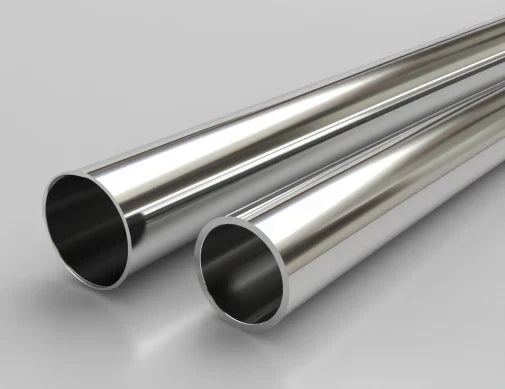
can water corrode stainless steel
Table of Contents
- Introduction
- Does Water Really Corrode Stainless Steel?
- Real-Life Examples: When Water Hurts Stainless Steel
- How to Prevent Water Damage to Stainless Steel
- What Do You Need to Weld Stainless Steel?
- What About a 2 1/2 Inch Flex Exhaust Pipe?
- What About a Stainless Flat Bar?
- Final Thoughts: Can Water Corrode Stainless Steel?
Introduction
If you’ve ever wondered whether water can damage stainless steel — like the kind you see in kitchens, sinks, or even car exhausts — you’re not alone. Many people assume stainless steel is completely “stainless,” but the truth is a bit more complicated. In this article, we’ll break it down in simple terms, answer your burning questions, and touch on related topics like what do you need to weld stainless steel, stainless flat bar, and 2 1/2 inch flex exhaust pipe.
Does Water Really Corrode Stainless Steel?
Short answer: Sometimes, yes — but not always.
Stainless steel is famous for resisting rust, unlike regular steel, which turns into a flaky, reddish mess when exposed to water and air. But stainless steel isn’t magic. It’s made with chromium (at least 10.5% by weight), which forms a thin, invisible layer that protects the metal from rust.
However, this protective layer can break down under certain conditions, especially if:
- The water is salty (like ocean water).
- The water has chlorine (like in swimming pools or treated tap water).
- The steel is scratched or damaged, exposing the raw metal underneath.
- The environment is super hot or humid.
So, while plain tap water usually won’t hurt stainless steel, saltwater, chlorinated water, or stagnant water can cause problems over time.
Real-Life Examples: When Water Hurts Stainless Steel
Let’s look at some everyday situations where water might cause issues:
1. Kitchen Sinks & Utensils
Most kitchen sinks and cutlery are made of stainless steel, and they usually hold up fine. But if you leave salty water (from washing dishes with lots of salt) sitting in the sink for days, you might notice pitting (tiny holes) over time.
2. Car Exhaust Systems (Like a 2 1/2 Inch Flex Exhaust Pipe)
Car exhausts are often made of stainless steel because they face extreme heat and moisture. However, if the exhaust pipe is damaged or constantly exposed to road salt (in winter), it can rust faster. That’s why some car owners add protective coatings.
3. Outdoor Stainless Steel Furniture
If you have a stainless steel bench outside, rainwater alone won’t hurt it. But if you live near the ocean, the salty air can cause corrosion. Regular cleaning helps prevent this.
How to Prevent Water Damage to Stainless Steel
If you want your stainless steel to stay shiny and rust-free, here are some easy tips:
1. Keep It Clean & Dry
Wipe down wet surfaces (like sinks or shower doors) to prevent water spots and mineral buildup.
2. Avoid Saltwater Exposure
If you’re near the ocean, rinse your stainless steel items with fresh water after salt exposure.
3. Don’t Scratch It
Using abrasive cleaners or steel wool can damage the protective layer. Stick to soft cloths and mild soap.
4. Use the Right Grade
Not all stainless steel is the same. For harsh environments (like marine settings), look for 316-grade stainless steel — it has extra corrosion resistance.
What Do You Need to Weld Stainless Steel?
Now, let’s talk about welding — because if you’re working with stainless steel (maybe fixing a 2 1/2 inch flex exhaust pipe or building something with a stainless flat bar), you’ll need to know how to join it properly.
Key Things You Need:
- A TIG Welder (Tungsten Inert Gas) – This is the best tool for stainless steel because it gives precise, clean welds.
- Stainless Steel Filler Rod – You can’t just use any welding rod; it has to match the steel type (like 304 or 316).
- Shielding Gas (Argon) – This protects the weld from air contamination, which can weaken the joint.
- Good Ventilation – Welding stainless steel releases fumes, so work in a well-ventilated area.
Pro Tip:
Stainless steel retains heat well, so if you’re not careful, you can warp the metal. Use slow, steady movements and let it cool naturally.
What About a 2 1/2 Inch Flex Exhaust Pipe?
If you’re working on a car exhaust system, you might deal with a 2 1/2 inch flex exhaust pipe. These pipes are flexible to absorb vibrations but are still made of stainless steel for durability.
Common Issues:
- Rust at the Joints – If the pipe isn’t properly welded or sealed, water and exhaust gases can cause corrosion.
- Cracks from Heat – Extreme temperatures can weaken the metal over time.
Solution:
- Use high-quality stainless steel clamps to seal joints.
- Check for damage regularly, especially if you drive in salty conditions.
What About a Stainless Flat Bar?
A stainless flat bar is a solid, rectangular piece of stainless steel, often used in construction, furniture, or DIY projects.
Why It’s Great:
- Doesn’t rust easily (if maintained).
- Strong and easy to cut or weld.
Common Uses:
- Building frames, shelves, or decorative pieces.
- Replacing rusty metal parts in machines.
Care Tips:
- If used outdoors, seal the surface to prevent moisture penetration.
- Avoid prolonged exposure to water if possible.
Final Thoughts: Can Water Corrode Stainless Steel?
Yes, but only under certain conditions. Most everyday uses (like sinks, cookware, or car exhausts) won't cause major problems if you take basic care.
Key Takeaways:
- ✅ Plain water is usually fine.
- ❌ Saltwater, chlorine, and scratches are bad news.
- 🔧 Welding requires special tools and techniques.
- 🚗 Exhaust pipes need regular checks.
- 🏡 Outdoor items need cleaning to stay rust-free.